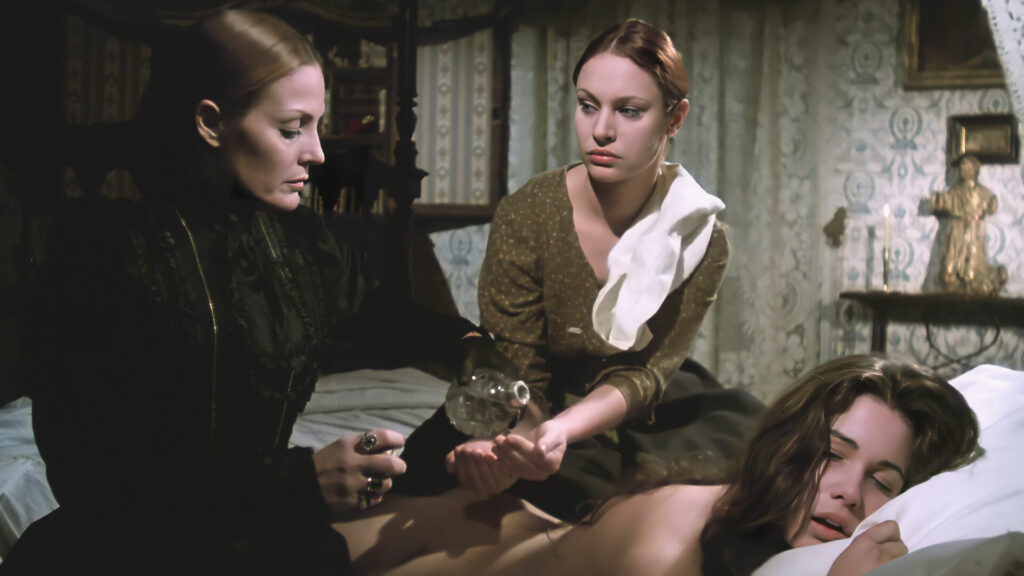
Beatriz (1976) is the second of two collaborations between director Gonzalo Suárez and international star Carmen Sevilla. Beatriz, like the earlier La loba y la paloma (1974), is a highly eroticized drama that explores themes of class privilege. However, Beatriz is tinged with Gothic trappings and folkloric underpinnings that place it in the more classical tradition of horror.
Beatriz concerns the ramifications of a friar’s (Jorge Rivero) visit to the manor of a Countess (Sevilla). The appearance of the friar coincides with the illness of a servant’s ( Nadiuska) child and the seeming demonic possession of the Countess’ daughter Beatriz (Sandra Mozarowsky). While the friar resides with the Countess’ family a band of outlaws plots their revenge on the friar.
The highly combustable narrative of Beatriz allows director and co-writer Suárez a means to explore opposing dichotomies in Spanish culture. The Catholicism of the friar and the aristocracy is juxtaposed with the pagan rituals of the servants and a witch while the scientific education of the Countess’ son Juan (Óscar Martín) by Mr. Bretal (Jose Sacristan) contrasts with the vigilantism and violence of the bandits. Beatriz plays out as a series of erotic bids for power between opposing philosophies, each personified by different sets of characters.
Although Beatriz is set in nineteenth century Spain, the themes are very much concerned with Spain’s post-Franco political struggles. Beatriz pits the old against the new, the divine against the flesh, and the ruling class against the self-empowered poor. The conflicts that arise in Beatrix between opposing sides are manifested in rapes, spell castings, lectures, and subtle battles of will. In dramatizing these conflicts, Suárez mines the popular canon of Western films of the seventies from Straw Dogs (1971) to Le Charme discret de la bourgeoisie (1972).
And yet, Beatriz is a film that remains ever faithful to its macabre genre. Literally surrounding the various manipulations and acts of violence that populate the plot of Beatriz is a mise en scène that is directly derived from classic Gothic horror films. Skulls, foggy woods, dilapidated buildings and all manner of objects that suggest death and isolation fill each frame of the film. The world of Beatrix is a world of the dead and the dying, even if the characters never realize it directly.
The nineteenth century setting of Beatrix captures Spain on the cusp of the industrial revolution, mirroring the new genesis of Spain after Franco. The look of the horror genre connects these two moments in time, turning Beatrix into a kind of temporal metaphor. Basically Suárez is suggesting that history is cyclical in structure and that the battles that make up that cycle are ever constant.
